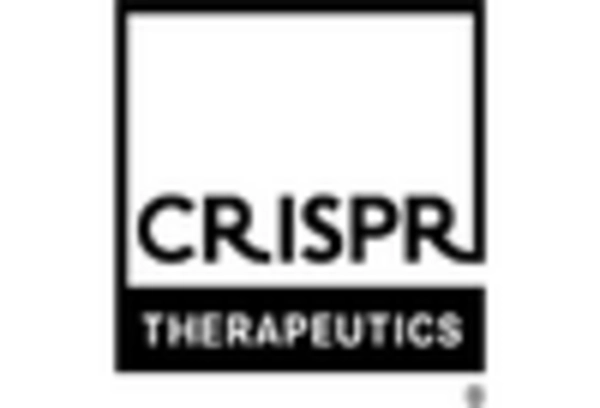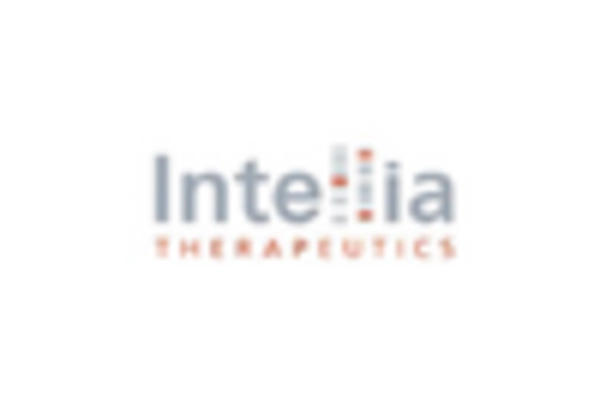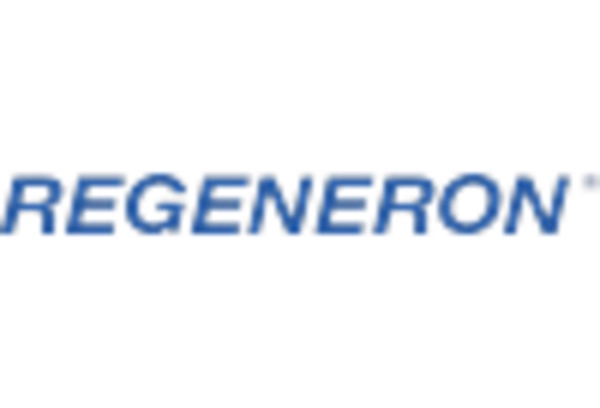Rising Demand for Food Security
Food security remains a pressing issue in South America, where agricultural productivity is crucial for sustaining the growing population. The gene editing market is poised to play a vital role in addressing these challenges. With an estimated 30% increase in food demand projected by 2050, innovative solutions are necessary to enhance crop yields and resilience against climate change. Gene editing technologies, such as CRISPR, offer the potential to develop crops that are more resistant to pests and diseases, thereby reducing reliance on chemical pesticides. Countries like Argentina and Brazil are actively exploring gene editing to improve staple crops, which could lead to increased food availability and lower prices for consumers. This rising demand for food security is likely to drive investments and research in the gene editing market, fostering sustainable agricultural practices.
Regulatory Support for Biotechnology
The regulatory landscape for biotechnology in South America is evolving, with governments increasingly recognizing the importance of gene editing technologies. Countries like Brazil and Argentina are developing frameworks that facilitate the approval and commercialization of gene-edited products. This regulatory support is crucial for the gene editing market, as it provides a clearer pathway for companies to bring their innovations to market. For instance, Brazil's National Technical Commission on Biosecurity has streamlined the approval process for genetically modified organisms, potentially reducing the time and costs associated with product development. As regulatory bodies continue to adapt to the advancements in gene editing, the market may see a boost in investment and research activities. This supportive environment could lead to a more robust gene editing market, fostering growth and innovation across various sectors.
Increasing Investment in Biotechnology
The gene editing market in South America is experiencing a surge in investment from both public and private sectors. Governments are recognizing the potential of biotechnology to address agricultural challenges and improve healthcare outcomes. For instance, Brazil has allocated approximately $200 million to support research and development in gene editing technologies. This influx of capital is likely to enhance the capabilities of local firms and research institutions, fostering innovation within the gene editing market. Furthermore, venture capitalists are increasingly interested in funding startups focused on gene editing applications, which could lead to significant advancements in crop resilience and disease management. As investment continues to grow, it may catalyze the development of new products and services, ultimately expanding the market's reach and impact across various sectors.
Advancements in Research and Development
The gene editing market in South America is benefiting from significant advancements in research and development. Universities and research institutions are increasingly collaborating with private companies to explore innovative applications of gene editing technologies. For example, Brazil's leading universities have established partnerships with biotech firms to develop genetically modified organisms that can thrive in local climates. This collaborative approach is expected to accelerate the pace of innovation, leading to the introduction of new products in the market. Moreover, the region's diverse ecosystems provide a unique opportunity for researchers to explore gene editing applications in various crops and livestock. As R&D efforts intensify, the gene editing market may witness a proliferation of novel solutions that address both agricultural and healthcare challenges.
Growing Awareness of Genetic Technologies
Public awareness and acceptance of genetic technologies are gradually increasing in South America, which is positively influencing the gene editing market. Educational campaigns and outreach programs are helping to demystify gene editing and its potential benefits. As consumers become more informed about the advantages of gene editing, such as improved crop quality and reduced environmental impact, demand for gene-edited products is likely to rise. This shift in public perception may encourage policymakers to support favorable regulations and funding for gene editing initiatives. Additionally, as more success stories emerge from the region, showcasing the benefits of gene editing in agriculture and healthcare, the market could experience accelerated growth. The growing awareness of genetic technologies may thus serve as a catalyst for innovation and investment in the gene editing market.


















Leave a Comment